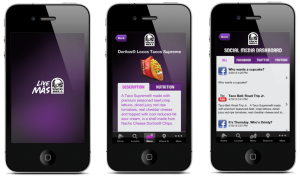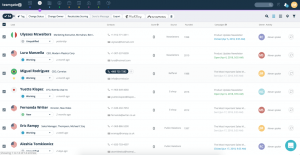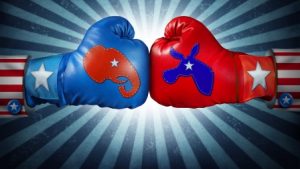Updated. E-commerce is up overall for the month of November.
Adobe projects between $ 10.2 and $ 11.3 billion to be spent online this Cyber Monday, which would make it the biggest e-commerce spending day of the year. This means it could run steady with last year, when $ 10.8 billion was spent online.
The Black Friday numbers indicate a slight headwind from last year. Black Friday and Thanksgiving Day were down and even, respectively, this year. With Black Friday, e-commerce spending came in at $ 8.9 billion, down from $ 9 billion in 2020. Turkey Day was at the same level this year as last year, at $ 5.1 billion.
According to the Adobe data, consumers are spending earlier online this year. In the period between Nov 1 and Nov 28, consumers spent $ 99.1 billion, up 13.6 billion year-over-year.
Why we care. There is a lot of news about supply chain delays, and consumers are paying attention. They’re spending earlier, and the efforts, in terms of discounts and other promotions, have paid off for marketers in this year’s lead-up to big holiday spending.
The larger trend in e-commerce that we’ve seen is that single-day events tend to get dragged out into multi-day bonanzas. They also get earlier, as retailers attempt to get a head start on the competition. Therefore, some earlier sales took the wind out of Black Friday. And Cyber Monday is morphing into Cyber Week. E-commerce revenue is up overall, so some of these tactics regarding timing appear to be working.
Cyber Month? “With 21 days in November driving over $ 3 billion in spend, what we know as Cyber Week is starting to look more like Cyber Month,” said Taylor Schreiner, director at Adobe Digital Insights. For reference, last November, only 8 days topped $ 3 billion by November 28, 2020.
Supply chain issues, labor shortages, new consumer behaviors and even a Google core update the week before Thanksgiving — many variables could be affecting how retailers performed this Cyber Week. Because of these factors, businesses may fall short of their Cyber Week goals. However, Adobe still expects the full season (November 1 to December 31) to reach $ 207 billion (10% YoY growth). With that in mind, it may be better to assess sales over a longer period, perhaps beginning at the start of November, to get a clearer picture of how your campaigns and promotions did this holiday season. This may also enable better YoY comparisons since customers seem to be shopping much earlier this year.
Top sellers. Over the weekend, Adobe found that toys, electronics, video games and TVs were the top sellers. Barbie, Baby Alive, Legos and NERF were among the top toys. In electronics, Nintendo Switch and Roku streaming sticks are top sellers, as are Acer and Lenovo laptops, and Samsung and Vizio TVs. For advertisers, this is another indication that streaming continues to surge. But shoppers will have to be flexible with in-demand items. This past weekend (Nov. 27 and 28), out-of-stock messages were up 16% compared with the preceding weekend.
Curbside pickup still high, BNPL slowing. Also this past weekend, curbside pickup rose 33% over pre-pandemic levels and was used 18% overall in online orders for retailers who offered that service. Last year, curbside pickup was even more prevalent, in 25% of all orders. This upward movement last weekend shows that many consumers still want to choose the safest option available to purchase store inventory.
If they’re cautious about safety, consumers appear to be more confident about their finances. Revenue from the Buy Now Pay Later (BNPL) option is down 10% YoY, with total orders down 23% YoY.
Search Engine Land Editor George Nguyen contributed to the reporting of this article.
Read next: Supply chain crisis impacts holiday shopping.
The post Cyber Monday set to be biggest spending day of year appeared first on MarTech.
MarTech(9)








